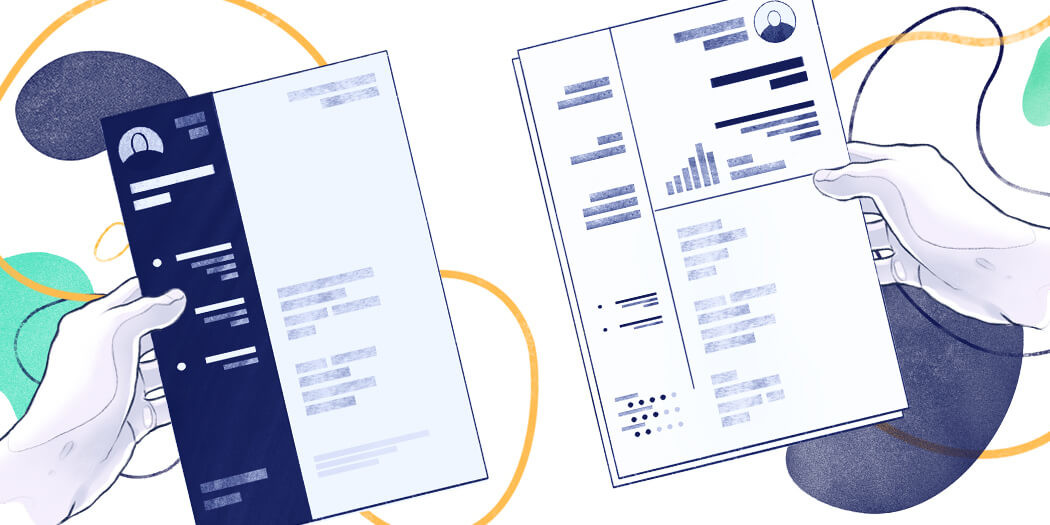
How Long Should a Resume Be: The Best Resume Length
How long should a resume be? One page? Two pages? Does it even matter? We’re here to answer all your questions about resume length!
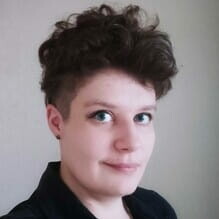
Olga Ber
Career Expert

You can create wonderful art, but can you make an equally stunning resume? Don't submit a blank canvas. Learn how to write an artist resume worthy of Michelangelo.
Do you even need an artist resume? Oh, very much so.
Whether you’re applying for exhibitions, residencies, grants, or art awards, selection committees will expect to see your art resume. And in order to beat hundreds of other candidates, yours will have to be perfect. In 7 minutes you’ll learn how to write an artist resume like that.
This guide will show you:
Save hours of work and get a job-winning resume like this. Try our resume builder with 20+ resume templates and create your resume now.
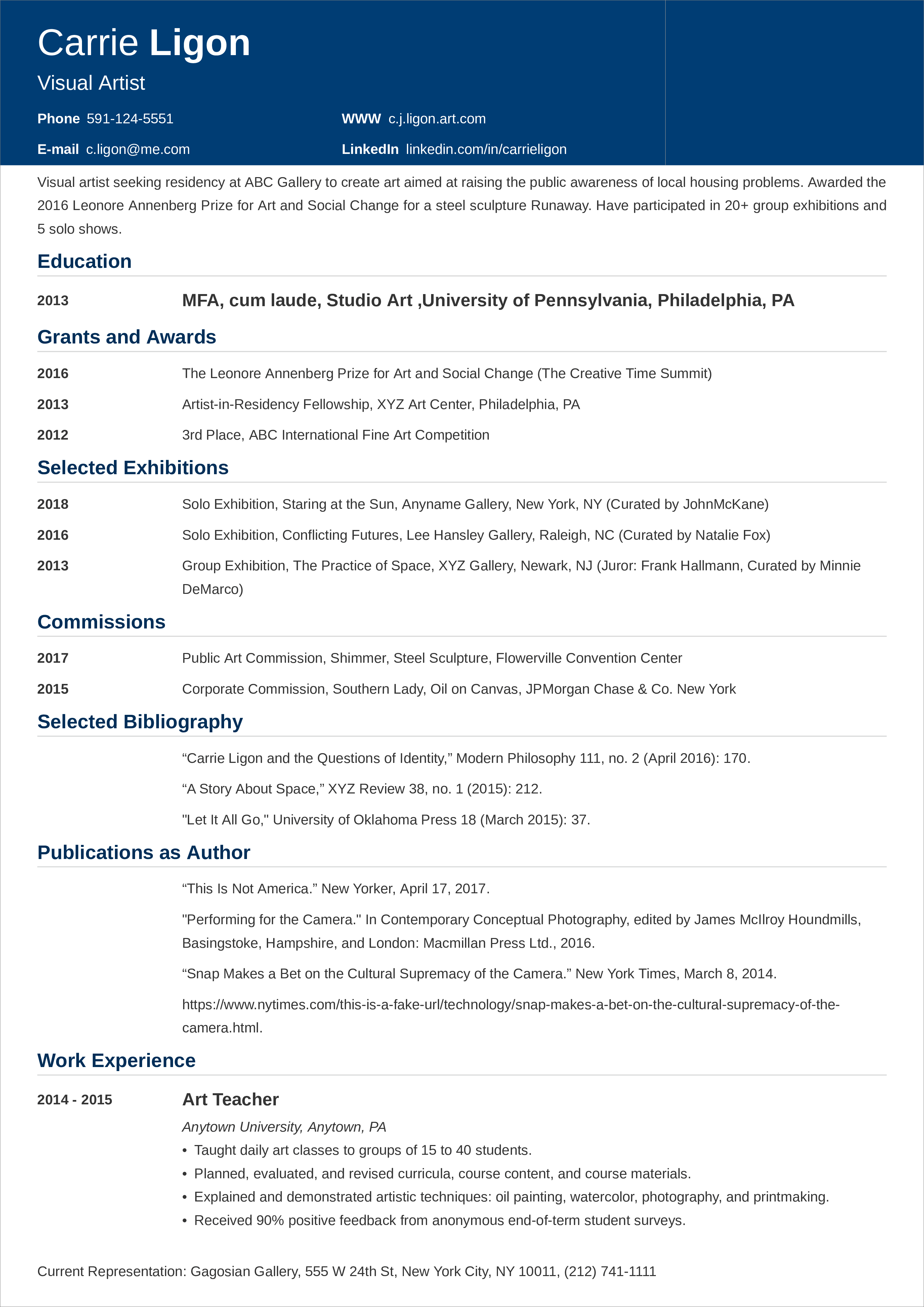
What users say about ResumeLab:
I had an interview yesterday and the first thing they said on the phone was: “Wow! I love your resume.”
Patrick
I love the variety of templates. Good job guys, keep up the good work!
Dylan
My previous resume was really weak and I used to spend hours adjusting it in Word. Now, I can introduce any changes within minutes. Absolutely wonderful!
George
Need help with a different kind of resume? Explore our other guides:
Haven't found what you're looking for? Check all our Resume Examples for Any Job.
Based on an analysis of over 500,000 resumes created in our builder, we found out that*:
- The median creation time for an artist resume on ResumeLab is just 27.8 minutes.
- Digital art knowledge, Visual art creation, and Visual design are the most often added skills to artist resumes.
- Artists report having an average of 3 years of total work experience.
* The data comes from the last 12 months (August 2023-August 2024).
Carrie Ligon
Visual Artist
591-124-5551
c.ligon@me.com
c.j.ligon.art.com
linkedin.com/in/carrieligon
Summary Statement
Visual artist seeking residency at ABC Gallery to create art aimed at raising the public awareness of local housing problems. Awarded the 2016 Leonore Annenberg Prize for Art and Social Change for a steel sculpture Runaway. Have participated in 20+ group exhibitions and 5 solo shows.
Education
MFA, cum laude, Studio Art
University of Pennsylvania, Philadelphia, PA
2012
Grants and Awards
2016, The Leonore Annenberg Prize for Art and Social Change (The Creative Time Summit)
2013, Artist-in-Residency Fellowship, XYZ Art Center, Philadelphia, PA
2012, 3rd Place, ABC International Fine Art Competition
Selected Exhibitions
2018, Solo Exhibition, Staring at the Sun, Anyname Gallery, New York, NY (Curated by JohnMcKane)
2016, Solo Exhibition, Conflicting Futures, Lee Hansley Gallery, Raleigh, NC (Curated by Natalie Fox)
2013, Group Exhibition, The Practice of Space, XYZ Gallery, Newark, NJ (Juror: Frank Hallmann, Curated by Minnie DeMarco)
Commissions
2017, Public Art Commission, Shimmer, Steel Sculpture, Flowerville Convention Center
2015, Corporate Commission, Southern Lady, Oil on Canvas, JPMorgan Chase & Co. New York
Selected Bibliography
“Carrie Ligon and the Questions of Identity,” Modern Philosophy 111, no. 2 (April 2016): 170.
“A Story About Space,” XYZ Review 38, no. 1 (2015): 212.
"Let It All Go," University of Oklahoma Press 18 (March 2015): 37.
Publications as Author
“This Is Not America.” New Yorker, April 17, 2017.
"Performing for the Camera." In Contemporary Conceptual Photography, edited by James
McIlroy Houndmills, Basingstoke, Hampshire, and London: Macmillan Press Ltd., 2016.
“Snap Makes a Bet on the Cultural Supremacy of the Camera.” New York Times, March 8, 2014.
https://www.nytimes.com/this-is-a-fake-url/technology/snap-makes-a-bet-on-the-cultural-supremacy-of-the-camera.html.
Work Experience
Art Teacher
Anytown University, Anytown, PA
2014–2015
Current Representation: Gagosian Gallery, 555 W 24th St, New York City, NY 10011, (212) 741-1111
Read on for step-by-step guidelines on how to write a good artist resume!
As an artist, you need different kinds of art resumes for different purposes. The main focus of your artistic resume will depend on what exactly you apply for. But one key thing is always the same—
Your artist resume needs an elegant layout, template, and a proper resume format. A poorly formatted resume might get your application rejected at first glance.
Then, decide on the structure and the order of sections of your artist resume or artist resume. Start with your contact information. Follow it with the education section so that the selection committee will be able to place you institutionally.
Further below, order your artist resume sections by competitiveness and prestige. But remember to focus on what’s most important to the post you’re applying for.
If it’s an exhibition, put emphasis on the exhibitions you participated in. A residency or fellowship? These go further up on your art resume.
See the suggested layout of sections for reference.
Expert Hint: Once you’re done writing your art resume, save it as a PDF file to keep the layout intact across all devices. But double-check with the opening if PDFs are accepted. If not, submit your resume in DOC.
Writing an artist resume for a full-time job outside of galleries or museums? For instance, a 3D artist resume or a freelance graphic artist resume? Use a more compact artistic resume template highlighting your work history.
This section is vital. Leave it off only if you’re creating an award application or an exhibition proposal to a museum or gallery. Think of your summary statement as a sales pitch for your artist resume. Summarize your most important professional achievements and explain the purpose of your art resume.
See what I mean in these two very different examples.
The good example gives value and precisely describes the candidate’s artistic objective. The bad example, in turn, is as generic as it gets.
On resumes for art applications, education section comes near the very top. The good news? It’s very easy to create it.
Limit yourself to the highest degree you’ve earned. Unless you’re fresh out of school include only:
MFA, cum laude, Studio Art
University of Pennsylvania, Philadelphia, PA
2012
Just finished your degree? You can add your GPA, plus your visual and written theses titles.
The ResumeLab builder is more than looks. Get specific content to boost your chances of getting the job. Add job descriptions, bullet points, and skills. Easy. Improve your resume in our resume builder now.

Nail it all with a splash of color, choose a clean font, and highlight your skills in just a few clicks. You're the perfect candidate, and we'll prove it. Use our resume builder now.
Imagine you’re Hito Steyerl… Would it be a good idea to focus on your most recent solo exhibition on your artist resume? Hell no!
You would want to open with the #1 ranking in Art Review’s 2023 Power 100. (Well, alright, in that case writing “I’m Hito Steyerl” would do the job.)
Since you’re reading this, I’m assuming you’re not Hito. Yet. So here’s a piece of advice on how to guide your career in the right direction. Below the education section on your art resume, list your most impressive and competitive achievements: awards, grants, and fellowships.
Like in this example:
2016, The Leonore Annenberg Prize for Art and Social Change (The Creative Time Summit)
2013, Artist-in-Residency Fellowship, XYZ Art Center, Philadelphia, PA
2012, 3rd Place, ABC International Fine Art Competition
Below your awards, include your exhibitions.
Not much exhibition experience? Include all your exhibitions in a single section. List solo, two-person, and group exhibitions. You should also add your thesis exhibitions.
If you’ve participated in a lot of art shows, divide your exhibitions into sub-sections:
And, if you have been instructed to make your art resume brief (e.g. no more than 2 pages), include only the most impressive of your exhibitions in a Selected Exhibitions section. Whichever strategy you’ll opt for, remember these general guidelines for artist resumes.
Like this:
Selected Exhibitions
2018, Solo Exhibition, Staring at the Sun, Anyname Gallery, New York, NY (Curated by John McKane)
2016, Solo Exhibition, Conflicting Futures, Lee Hansley Gallery, Raleigh, NC (Curated by Natalie Fox)
2013, Group Exhibition, The Practice of Space, XYZ Gallery, Newark, NJ (Juror: Frank Hallmann, Curated by Minnie DeMarco)
All of the above sections are must-haves on a good artist resume. But, experienced artists might have more achievements to showcase. That’s what these additional sections are for.
If applicable, below your Exhibitions section, add sections for:
It doesn’t matter if you’re writing a conceptual artist resume, a performance artist resume, or even an emerging artist resume. All entries listed above will provide tangible proof of your accomplishments.
If you’ve held full-time positions, describe them in an additional Work Experience section.
Here’s how:
See these sample artist resumes for reference.
Art Teacher
Anytown University, Anytown, PA
2014–2015
2014 - 2015, Anytown University, Anytown, PA
Art Teacher
Responsibilities:
If you’re currently being represented by a commercial gallery or a museum, in the footer of your artist resume you might want to add information on the current representation. List the name of the gallery, address, and basic contact details. Like this:
Current Representation: Gagosian Gallery, 555 W 24th St, New York City, NY 10011, (212) 741-111
Double your impact with a matching resume and cover letter combo. Use our cover letter generator and make your application documents pop out.

Want to try a different look? There's 21 more. A single click will give your document a total makeover. Pick a cover letter template here.
Here’s how to write an artist resume in 5 easy steps:
*Data was collected from July 2023 to June 2024.
At ResumeLab, quality is at the crux of our values, supporting our commitment to delivering top-notch career resources. The editorial team of career experts carefully reviews every article in accordance with editorial guidelines, ensuring the high quality and reliability of our content. We actively conduct original research, shedding light on the job market's intricacies and earning recognition from numerous influential news outlets. Our dedication to delivering expert career advice attracts millions of readers to our blog each year.

How long should a resume be? One page? Two pages? Does it even matter? We’re here to answer all your questions about resume length!

Olga Ber
Career Expert
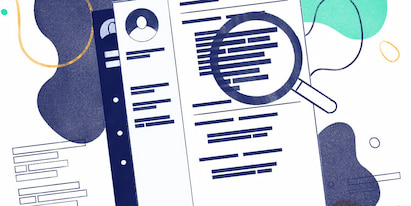
How do you write a resume? With so many conflicting opinions out there, we’ve set out to find the ultimate answer to this question.

Michael Tomaszewski, CPRW
Certified Professional Resume Writer, Career Expert
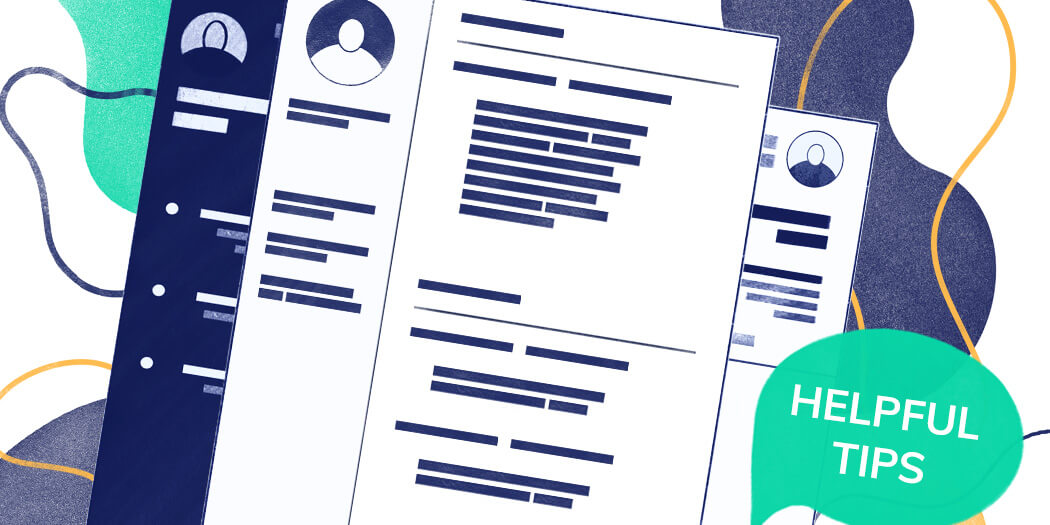
You can stop searching—this is the ultimate collection of best resume tips that can help you succeed in 2026. These resume writing tips will help to impress hiring managers.
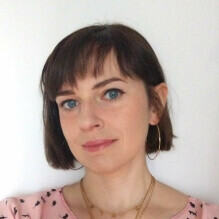
Roma Konczak, CPRW
Certified Professional Resume Writer, Career Expert